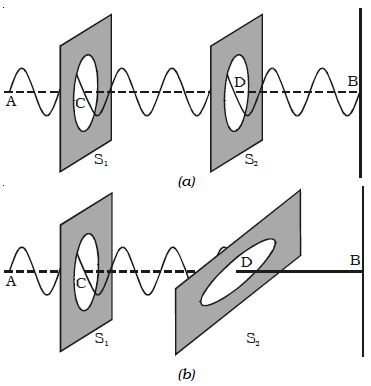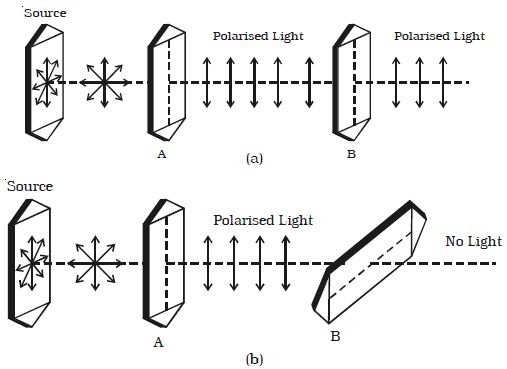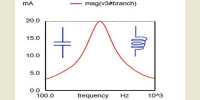The polarization of transverse waves.
Let a rope AB be passed through two parallel vertical slits S1 and S2 placed close to each other. The rope is fixed at the end B. If the free end A of the rope is moved up and down perpendicular to its length, transverse waves are generated with vibrations parallel to the slit. These waves pass through both S1 and S2 without any change in their amplitude. But if S2 is made horizontal, the two slits are perpendicular to each other. Now, no vibrations will pass through S2 and amplitude of vibrations will become zero. i.e the portion S2B is without wave motion as shown in the figure.

Fig: Polarization of transverse waves
On the otherhand, if longitudinal waves are generated in the rope by moving the rope along forward and backward, the vibrations will pass through S1 and S2 irrespective of their positions.
This implies that the orientation of the slits has no effect on the propagation of the longitudinal waves, but the propagation of the transverse waves is affected if the slits are not parallel to each other.
A similar phenomenon has been observed in light when light passes through a tourmaline crystal.

Fig: Polarization of transverse waves
Light from the source is allowed to fall on a tourmaline crystal which is cut parallel to its optic axis (Figure: a).
The emergent light will be slightly coloured due to the natural colour of the crystal. When the crystal A is rotated, there is no change in the intensity of the emergent light. Place another crystal B parallel to A in the path of the light. When both the crystals are rotated together so that their axes are parallel, the intensity of light coming out of B does not change. When the crystal B alone is rotated, the intensity of the emergent light from B gradually decreases. When the axis of B is at right angles to the axis of A, no light emerges from B (Figure: b).
If the crystal B is further rotated, the intensity of the light coming out of B gradually increases and is maximum again when their axis is parallel.
Comparing these observations with the mechanical analogue discussed earlier, it is concluded that the light waves are transverse in nature.
Light waves coming out of tourmaline crystal A have their vibrations in only one direction, perpendicular to the direction of propagation. These waves are said to be polarized. Since the vibrations are restricted to only one plane parallel to the axis of the crystal, the light is said to be plane polarized. The phenomenon of restricting the vibrations into a particular plane is known as polarization.












